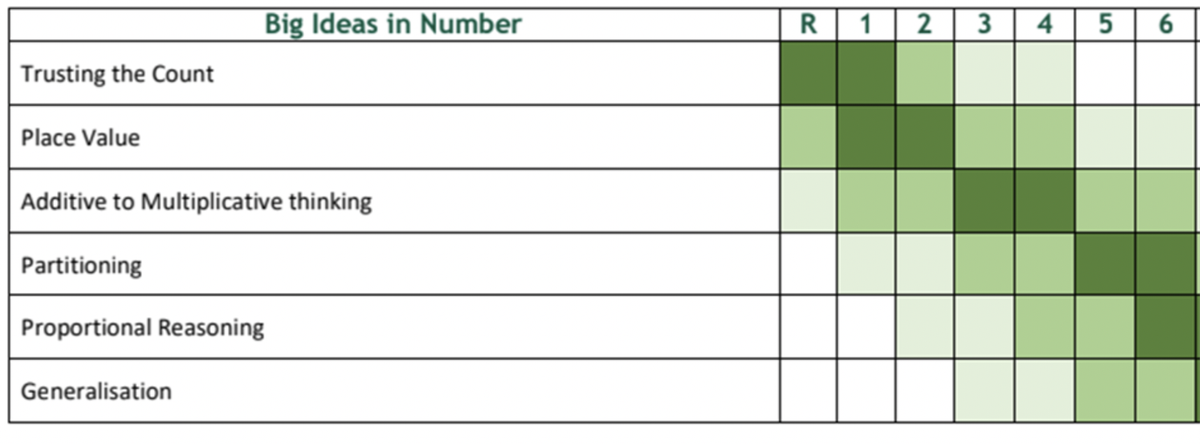THE BIG IDEAS IN NUMBER
T4 2023

THE BIG IDEAS IN NUMBER
T4 2023
At Hackham East Primary we are always striving to create learning environments where both students and staff have and are supported to develop a ‘Growth Mindset’. We create learning environments that foster ‘Life Long’ learners where both students and staff understand that a key part of learning is making mistakes, being in the ‘Learning Pit’ and working through learning that is new, challenging and sometimes uncomfortable.
Within our Site Improvement Plan in Mathematics, we focus on building student’s automaticity in the Big Ideas in Number. Throughout 2022 and 2023 Staff have become competent with and are successfully implementing the Big Ideas pertinent to their year level and students’ abilities in their class, with the support of our Maths Mentor, Mrs Fiona Dealtry. This differentiated approach targets every student within each class ensuring that all students mathematics needs are being met so individual progress can be achieved.
Di Siemon, Chief Academic responsible for The Big Ideas in Number framework, suggests that the concepts of ‘trusting the count’, ‘place value’, ‘multiplicative thinking’, ‘partitioning’, ‘proportional reasoning’, and ‘generalising’ are the checkpoints in number sense each student is required to pass through before progressing further in mathematics.
The Big Ideas in Number are categorised into the following stages at a Junior Primary and Primary year level:
The Big Ideas in Number provide stepping stones or stages for learning maths and allows students to build the foundations in mathematical concepts. Students need to understand the concepts at each stage before moving on to learning concepts at the next stage. Conceptual Understanding Numeracy involves students recognising and understanding the role of mathematics in the world.


Due to the consistent approach across the school, buy in from all teachers and ongoing professional development for staff, several of our Primary Students have made exponential growth and are currently working within the 5th Big Idea – Proportional Reasoning, which is generally consolidated in High School. Continual practise and revision of the Big Ideas in Number is how we will continue to build confidence in our children’s maths ability.
Our staff are committed to ongoing professional learning and a focus on assessing and teaching the ‘Big Ideas in Number.’ This will support our students to build solid foundations in the critical ‘Big Ideas in Number’ relevant to their year level and level of progression to build fluency, confidence and positive dispositions towards maths learning and problem solving.
Scott Megson
Deputy Principal